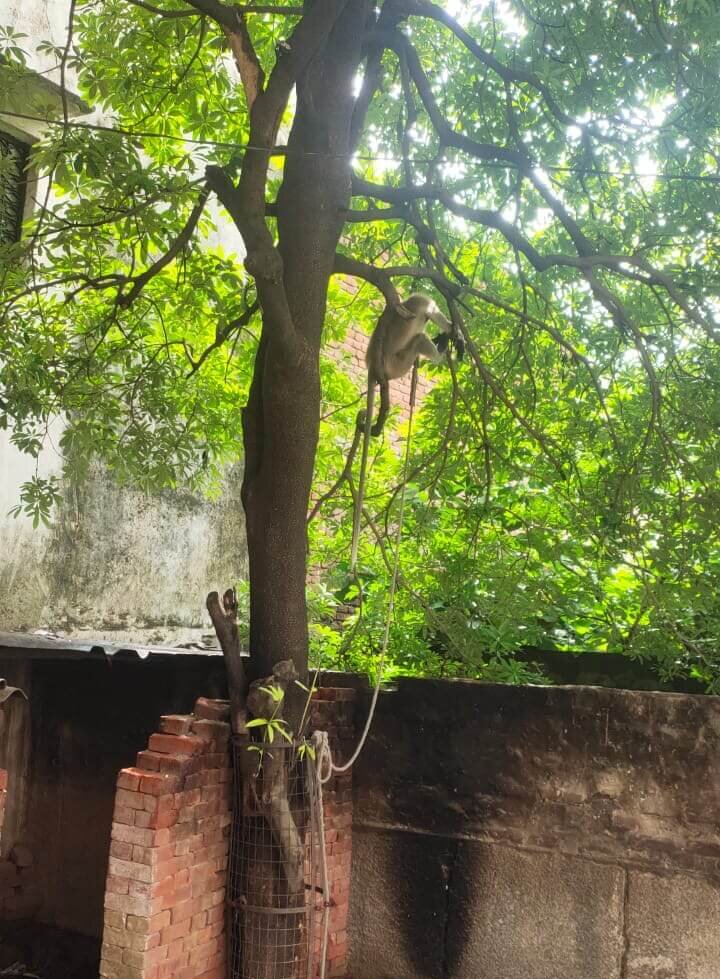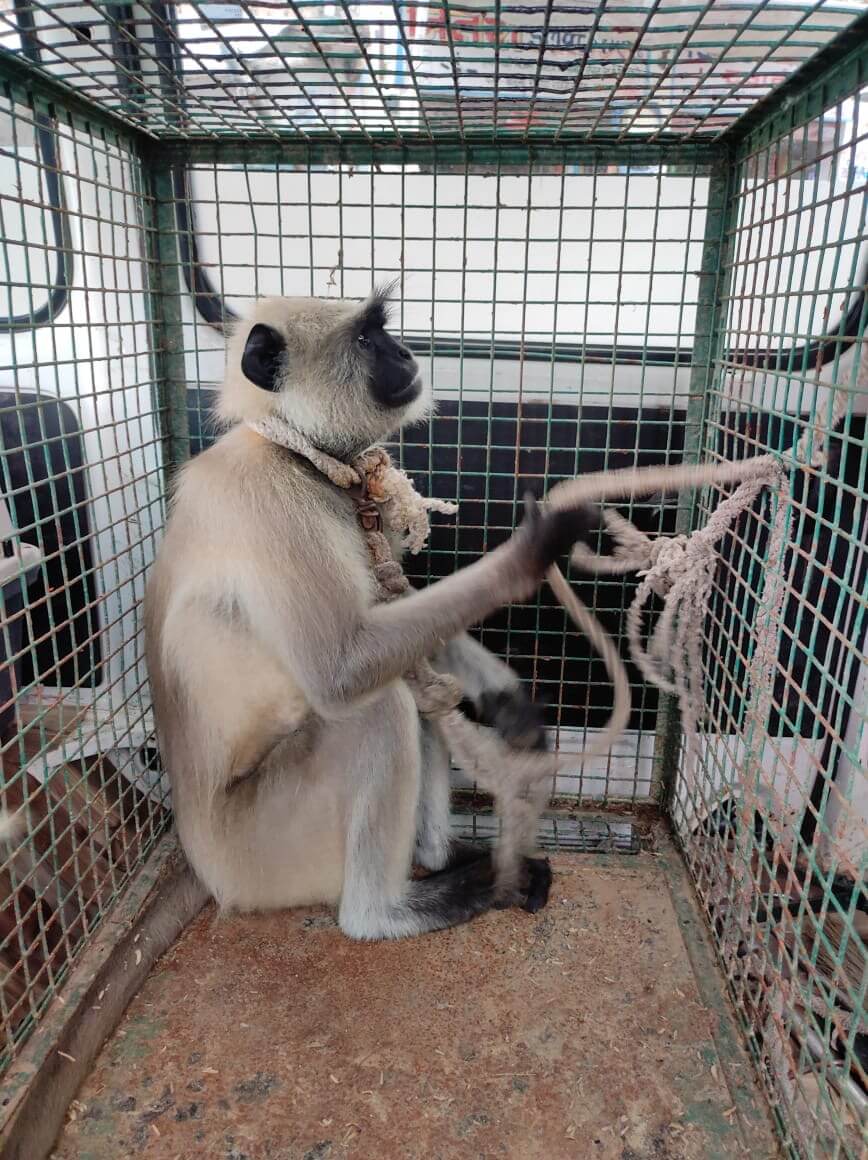Agra Forest Division, Wildlife SOS Rescue an Illegally Confined Langur Following PETA India Complaint
After a concerned citizen reported that a captive gray langur, commonly known as a Hanuman langur, was tied to a tree by the neck, PETA India immediately alerted the Agra Forest Division of the Uttar Pradesh Forest Department and Wildlife SOS, which together rescued the primate and released him into a natural habitat. Gray langurs are protected under Schedule II of the Wild Life (Protection) Act (WPA), 1972, which makes capturing them, keeping them in captivity as “pets”, or forcing them to perform offences punishable by up to three years in prison, a fine of up to Rs 1 lakh, or both. PETA India has called on forest officials to book the perpetrators under the relevant sections of the WPA.
Following the rescue, the langur received a thorough health check before being released back into a natural habitat. In the forests, Hanuman langurs typically live in groups of dozens of individuals. They spend much of their time playing, grooming, and engaging in other social activities. Family members are always on the lookout for danger and quickly rush to the defence of their loved ones.
Monkeys kept in people’s homes as “pets” or who are forced to dance are often chained or confined to cramped cages. When used for entertainment, they are typically trained through beatings and food deprivation, and their teeth are commonly pulled out to prevent them from defending themselves. In 1998, the central government issued a notification under The Prevention of Cruelty to Animals Act, 1960, stating that monkeys and several other species of wild animals are not to be exhibited or trained as performing animals.










